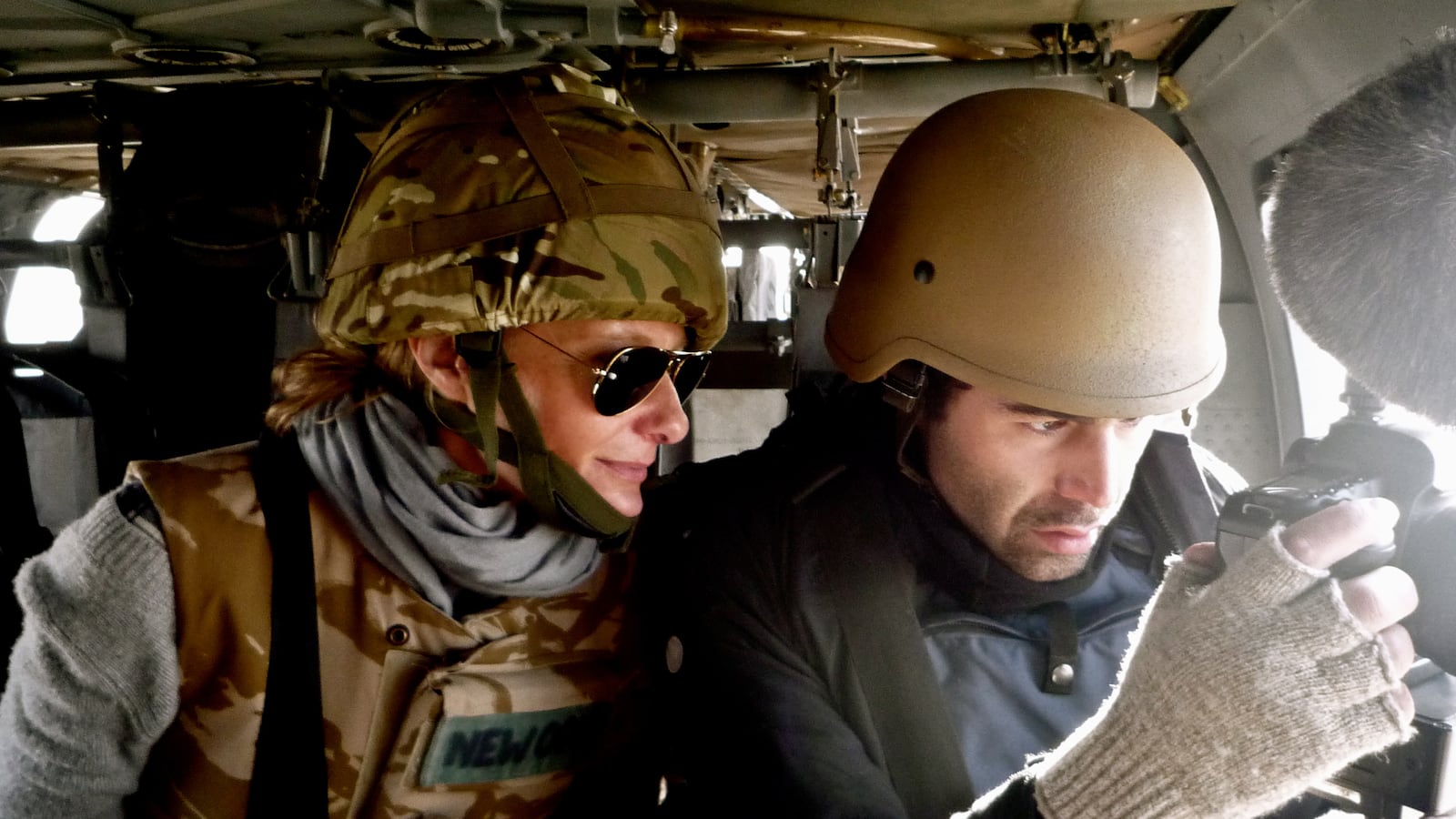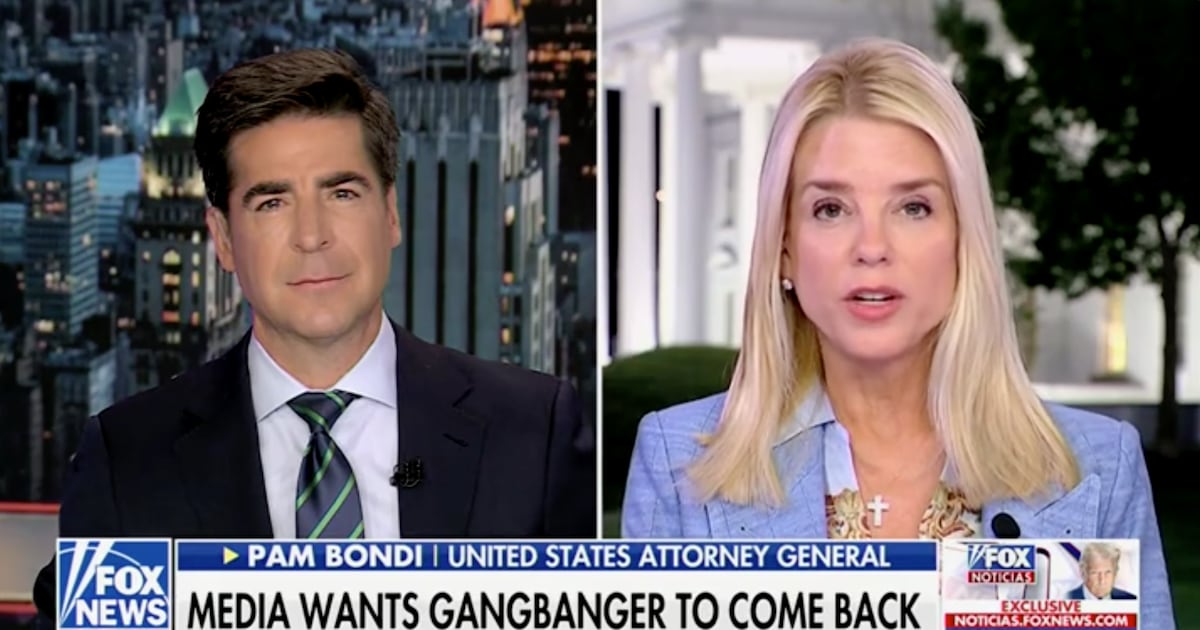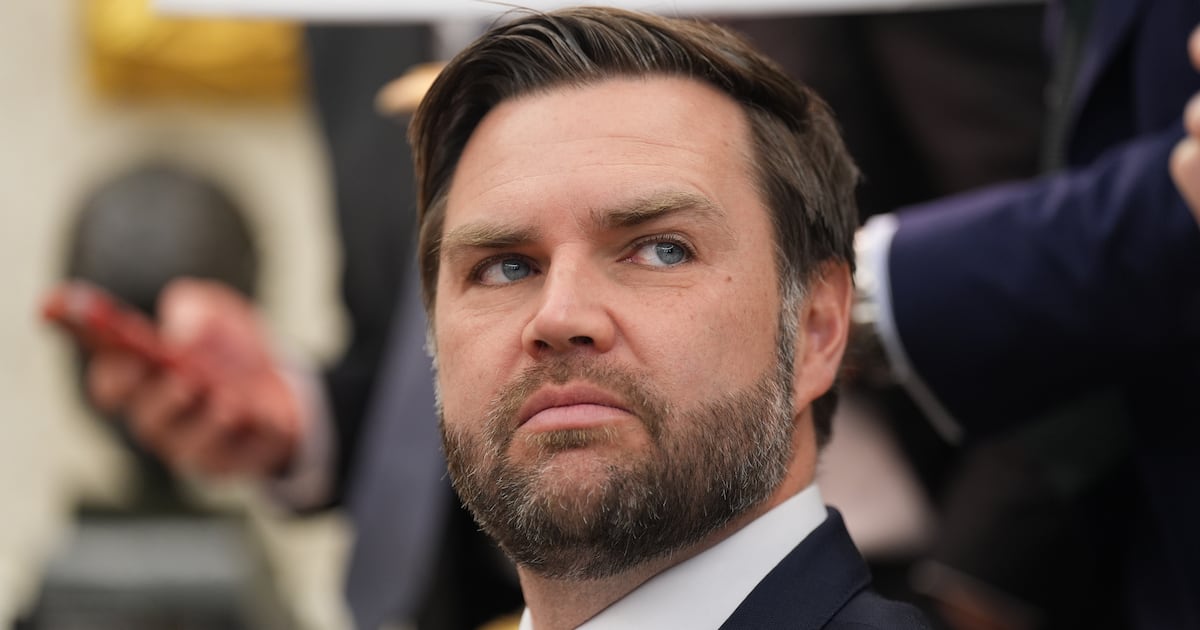Oscar-winning filmmaker Eva Orner literally suffered for her art to make The Network, her hopeful yet harrowing documentary about a media mogul and his family’s dreams of transforming their beloved Afghanistan from a brutal, medieval backwater into a tolerant, modern society.

Orner, 43—who shared the Best Documentary statuette with director Alex Gibney as a producer of Taxi to the Dark Side, the 2007 film about post-9/11 America’s use of torture—narrowly escaped death a couple of times during her three months in Afghanistan. Once, she missed by a couple of minutes a December 2011 suicide bombing that killed 80 people and maimed many more, and another time she nearly stepped on one of the many land mines that still litter the country. She also ruined her health, contracting parasites and pancreatitis that have required repeated hospital stays since she returned home to Los Angeles.
“I was sick the entire time I was there, and have had health issues for the last 18 months—a horrible stomach thing, because I was riddled with parasites, and two bouts of pancreatitis,” Orner told me this week, as she got ready for Friday’s New York premiere at the IFC Center. “Despite everything, there has not been one time where I regretted making the film. Even with nine days in the hospital in horrible pain, and horrific medical expenses, there was never a time I said, ‘I wish I didn’t do that.’ ”
Orner speaks with the salty twang of her native Melbourne, Australia. It’s a hometown she shares with her film’s protagonists, the Mohseni siblings (Saad; his younger brothers, Zaid and Jahid; and their younger sister, Wajma), who were exiled from Afghanistan when the Soviets invaded in 1979—their father was a diplomat in Japan—and returned 22 years later to launch, with the help of the U.S. government, the country’s first independent television network, Tolo (for “dawn”) TV, after the American military chased out al Qaeda and toppled the Taliban.
As the Mohsenis and Tolo started getting ink in the Western press for their mass-media campaign to pull the 30 million inhabitants of Afghanistan into the 21st (or, at the very least, out of the 12th) century, Orner became convinced that the network and its 900 employees could be grist for a powerful documentary. She was right. The fact that she and the Mohsenis grew up in the same city merely sweetened the deal. “When I first called Saad in Kabul, he had a very strong Melbourne twang in his accent,” Orner said, recalling that she discovered that she and Jahid were contemporaries at Melbourne’s Monash University and had friends in common.
Tolo chief executive Saad, who was rapidly building his reputation as the “Rupert Murdoch of Kabul,” threw open his entire operation to Orner; Mohseni also introduced Orner to his close friend Tom Freston, the MTV founder and Afghanistan aficionado, who appears in the movie and ultimately helped the ailing Orner obtain expert medical attention.
In the end she found gripping, poignant, occasionally comical stories and personalities—not only Saad, who in the film recalls bending down to kiss the tarmac when his overcrowded commercial jetliner finally landed in Kabul after his two-decade exile, but also in the young men and women—some of whom come to work from abusive homes where they’re beaten by their husbands—who put themselves in harm’s way to entertain and inform up to 15 million viewers daily.
In the film’s shocking opening scenes, punctuated by gut-wrenching, graphic video of a hanged “criminal” dangling dead from a light pole as a bearded zealot struts with his AK-47, Tolo journalist Ahmad Shafi describes how during the Taliban era, public executions “had become the only entertainment in the city.” From a distance of three meters in the middle of a gleeful mob, he recounts, he watched a 22-year-old man accused of killing a relative as he was summarily shot in the head by a Taliban executioner. “As he was dying,” Shafi recalls, “he made like a purring sound—like a cat.”
As The Network documents, Tolo has replaced public executions with a steady diet of soap operas, family-advice programs, an Afghan version of Sesame Street (which appeals not only to children but to an adult population that is largely illiterate), a popular American Idol-like singing competition titled Afghan Star, news shows, and even a 24 knockoff titled Eagle 4—sponsored by the U.S. Embassy—in which Afghan security forces, week after week, kill terrorists, arrest aspiring suicide bombers, and safeguard civil society.
Tolo’s head of drama, an Australian expat named Trudi-Ann Tierney, worries that she has become a mere U.S. propagandist, disseminating the arguable proposition that the Afghan police force is worthy of trust. “That kind of disturbed me a little bit for a while,” she confides. “I did some self-examination.”
Ultimately, she decided that if it didn’t bother her young charges, it shouldn’t bother her. “The kids I work with believe in what they’re doing, and this is their country. They write the scripts. They think what they’re doing is really important.”
On occasion, Mohseni provided Orner with nonfictional security—from the more than 100 private cops that Tolo employs—to protect her and her director of photography on the mean streets of Kabul. “We kept it really small—just me and the DP,” Orner said, adding that they used a compact Canon 5D digital video camera, which is easily mistaken for a still camera, in order not to attract unwanted attention from rifle-toting Afghans in uniform. “You don’t want a bunch of white people standing around on the streets. I’m the whitest-looking person on the planet, with long blonde hair and pale skin. I can be seen from miles away. I can’t walk down the street without being covered up, to some degree. I can’t be the terribly opinionated person I am.” Indeed, after the 2008 Academy Awards, she made a splash by telling Australian radio that the Bush administration was populated by “a bunch of war criminals.”
“It gets pretty old and exhausting,” Orner continued, “trying to get through a checkpoint with men pointing guns at you and screaming at you in a language you don’t understand.”
And yet, despite the violence and poverty and dirt and disease—to say nothing of centuries-old social traditions that give men a savage supremacy—there was a part of Orner that fell a little bit in love with the place. “It gets under your skin. It’s very surprising,” she told me. “On some levels, it’s an absolute hellhole. On some levels, it’s an extraordinary place, and you can be very seduced by it. One of the things I tried to do was make Kabul a character in the film.”
The Network, at bottom, “is a really good case study of how you can infiltrate a country and change a country through media, and how propaganda can be good as well as bad,” Orner said. The film can be seen, in some ways, as an argument for continued U.S. involvement in a hardscrabble, tribal, warlike land from which all but 10,000 to 20,000 American soldiers are scheduled to withdraw next year. Or it can be seen as a fatalistic acknowledgment that regardless of our best intentions, the prudent thing to do is to get out quickly, completely and forever—a view embraced by an overwhelming majority of Americans in public-opinion surveys.
Orner can empathize with both sides. “A bunch of really smart people that have seen this film have come up and said to me, ‘Wow, I really feel conflicted now,’ ” she said. “That’s very much how I feel.”
Editor's Note: This story was revised to reflect the following corrections: Eva Orner’s close brush with a land mine didn’t occur in Kabul, which is not littered with land mines, but well outside of Afghanistan’s capital city. Also, she did not encounter rifle-toting “militias” but simply armed Afghan security forces in uniform.






